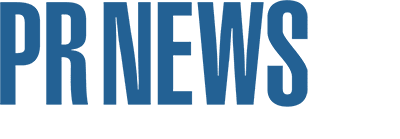
In October 2017, John Gilfeather, president, John Gilfeather & Associates, in the pages of PR News, weighed in on the difficulties agencies and in-house departments face in attempting to measure the effectiveness of their efforts.
Most PR pros are unable to cite analytics/big data as a core skill set, he wrote. If they seek to hire a vendor to do the job, they can be confused by the offerings of a plethora of measurement firms all claiming to be superior. There are, of course, budget constraints. For some, there also may be a sense of trepidation, i.e. “We may find out we’re not doing as well as we thought.”
Allyson Hugley, president of measurement and analytics for Weber Shandwick, expanded upon the pain points of PR measurement, indicating there has been too much talk and too little action. “The industry continues to discuss data evolution conceptually—as a thought-leadership topic—rather than pushing aggressively for a real, industry-wide data transformation,” Hugley wrote in an edition of PR News.
We can agree that PR measurement is not just about numbers and tone. And it’s not about trying to measure a program’s absolute success or failure.
Today, measurement is about how organizations can use accurate and insightful data to influence business decisions and develop more strategic guidance. There are many aspects within the realm of data measurement and its relationship to business success. Thinking differently and strategically about measurement is critical to validating its value.
What are today’s forward-looking organizations doing to surmount barriers to effective measurement? What results can be expected when organizations make the shift to truly strategic measurement?
The following emerged from discussions with colleagues about how they derived strategic insights from PR measurement.
A. Leverage the value of CSR. As strategic business people know, investment in corporate social responsibility (CSR) amounts to far more than “feel good” activities; it delivers ROI. Research shows nearly 90% of Americans will purchase a product because a company advocates for an issue they care about, and three-quarters will refuse to buy from a company if it supports an issue contrary to their beliefs. Case in point: A leading financial services organization sought to measure the impact of its national and regional CSR campaigns, including its “share of voice” metric, i.e. how much positive and negative coverage it’s garnering on this topic versus its top 10 competitors.
The company established a baseline for measurement and, after just one quarter, saw a positive share of voice increase of more than 15%. A veteran executive quickly concluded that the results were so strong the team should undertake similar efforts to boost other brand drivers not associated with CSR.
B. Ask the right questions during a crisis. Given the intense focus on their industry group, technology companies sometimes weather sudden, powerful crises that can quickly threaten to undermine their reputations.
One company recently dealt with a product-related crisis that resembled an earlier situation. The communications staff analyzed data from the prior crisis to answer a number of important questions: How often did we respond to inquiries about the product situation? Are the same authors and outlets telling this story? What can social sharing tell us about what we’re dealing with now?
After collecting and assessing the data, the company positioned itself to make smarter decisions. It opted to increase the frequency of its responses to inquiries, for instance, to shorten the news cycle. Thus, the volume of social sharing—which, in this case, would be largely negative—was sharply reduced, along with the time window for the sharing.
C. Improve the effectiveness of events. A communications team staged an annual event in Asia for years. A competitor ran a similar event there around the same time and had recently dominated the share of voice in U.S.-based media.
Knowing it had to improve its execution, the communications team compared year-over-year data for both events to accurately compare the coverage as well as discussions surrounding related topics and subtopics, including the tone. Because it had this data, the company could look back at specific pieces of information to uncover different influencers, new topics, etc. Armed with this data, the team developed a strategic plan to more proactively connect to influencers, authors and outlets that could have the most positive impact well ahead of the next year’s event.
These examples are the tip of the iceberg in knowing how to develop and maximize strategic media measurement data.
For example, you can detect if a prominent journalist is covering your brand constantly or only intermittently or if your target audiences are talking about you or your competitors and what they’re saying. You can understand what impact social media has on traditional media and if certain topics play better in different social platforms.
Developing this type of information often requires a shift in thinking. Basic media metrics often prove to be irrelevant in the context of broader business operations, but by focusing on business goals and measuring against them proactively, communicators can adapt their media strategies to enable more strategic results.
Jim Simon is a former CCO of several Fortune 500 corporations, a trustee of the Institute for Public Relations and a member of its Measurement Commission.
